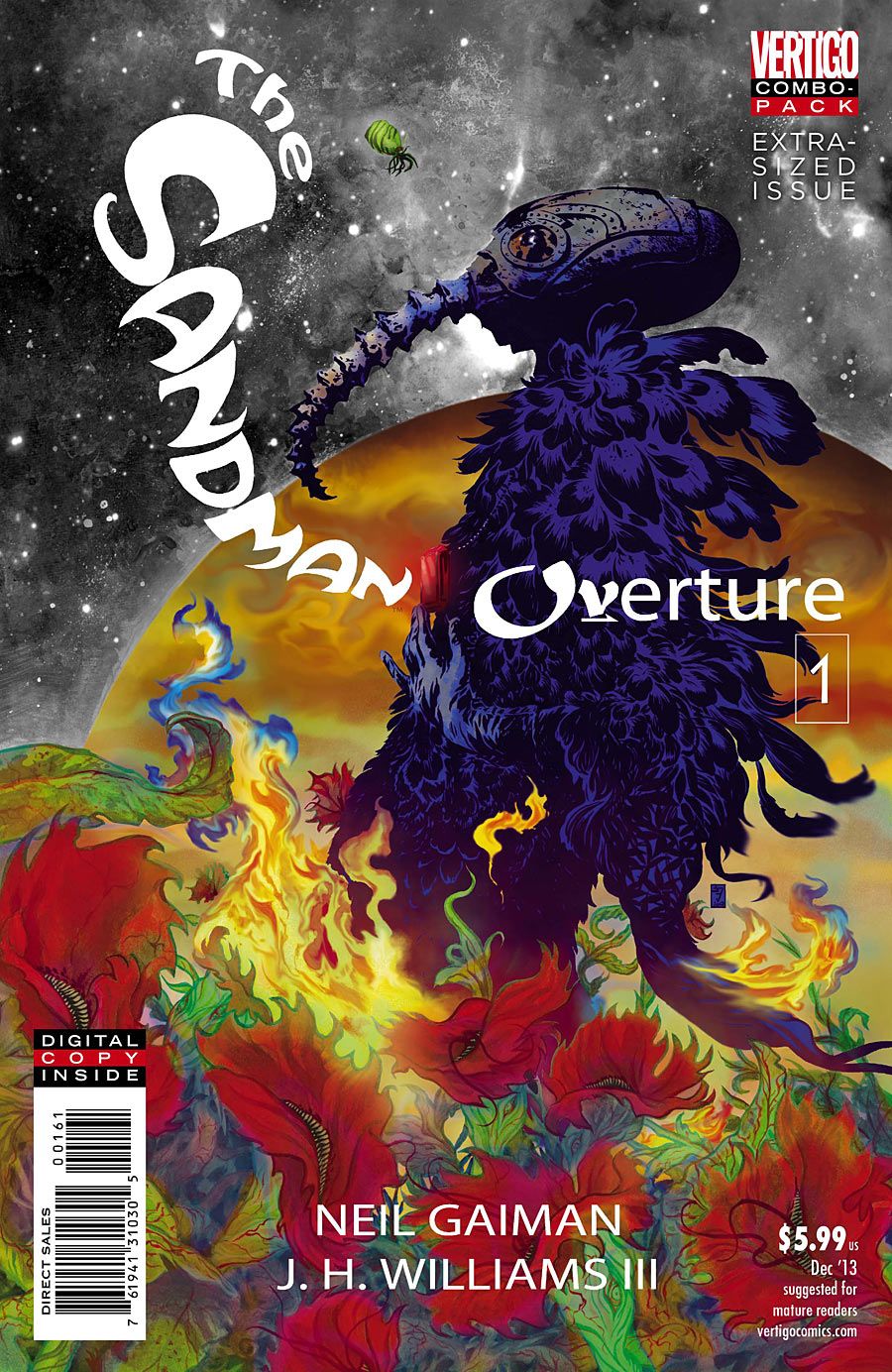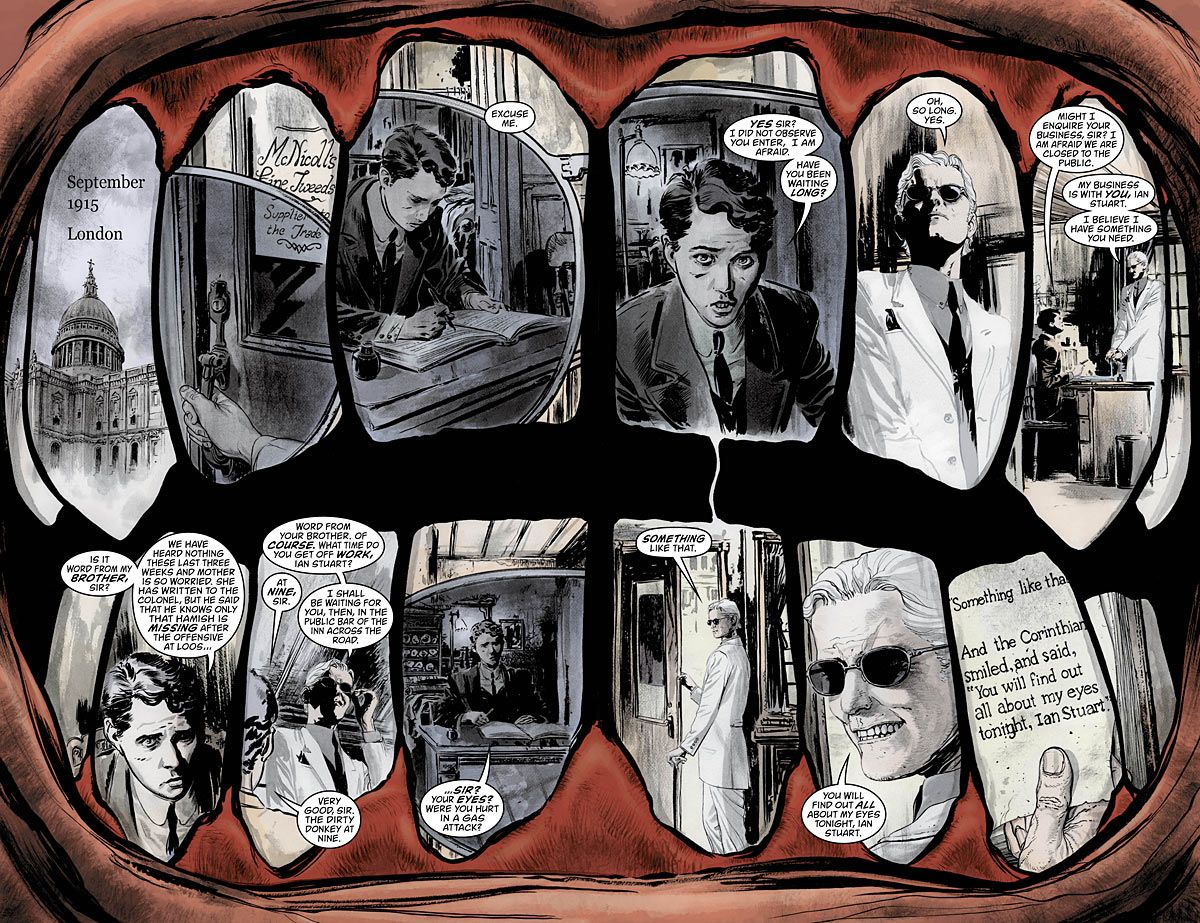One of the most well-received announcements of Comic-Con International 2012 was the return of Neil Gaiman to Vertigo Comics' for "Sandman: Overture." Alongside acclaimed "Batwoman" artist J.H. Williams III, Gaiman continues his "Sandman" legacy as he explores Morpheus' journey leading to "Sandman" #1 for the series' 25th anniversary.
The reveal in 2012 came as a huge, albeit pleasant, surprise to fans, and Vertigo has continued to build anticipation since then, even going so far as to use the book to spearhead its rebuilding initiative following the exit of founding editor Karen Berger.
In order to get some insight on the artistic aspects of "Sandman: Overture," CBR News spoke with J.H. Williams III to discuss his history with Gaiman's most famous comics creation, his artistic influences and the collaborative process involved in bringing the historical project to life.
CBR News: How did you first become familiar with Neil Gaiman's work, "Sandman" in particular?
J.H. Williams III: It was with "Sandman" -- "Sandman" #1, all those years ago. I always read comics, but "Sandman" came along at just the right time, when there was this new interest in comics becoming something other than superheroes. I was at the right age, where superheroes -- as much as I enjoyed them, I needed more. So when "Sandman" #1 came along, it was perfect! I read that, and I was like, "This is what I want! Let's have more, please." From that, and I went back and read "Black Orchid" and "Signal To Noise" and "Violent Cases," and I just kept expanding my library of his work. It was clear that Neil was a unique voice.
How did reading those comics affect your visual vocabulary? Dave McKean and Sam Kieth -- that's a whole range of input beyond what traditional superhero comics provided.
Yes, absolutely. I think at that point I was already extremely open and receptive to anything that was not the norm in comics, because I grew up in the Bay Area, here in California, and I had access to a whole wide variety of comics as a young person. At age ten, I knew who Moebius was, and so on and so forth, so I was already very receptive. Particularly, because I drew, so when I'd see these different guys doing these different things, [I was] like, "This guy's different than this guy over here. All these qualities are fantastic, but all these qualities are fantastic, too!" It just really sparks that creative mind in a young person. That's probably what made me open to finding "Sandman" in the first place, and being able to look at "Sandman" when it came out and go, "Yes, this is great!"
What other visual influences would you cite, beyond comics? What other artists were you looking at in your formative years?
I can go all the way back to Renaissance painters. I remember being really engrossed in Rembrandt as a young person. I've been sort of an artistic sponge, I guess you could say. Anything that was creative, I was attracted to. There was a whole wide range of things, from pulp magazine covers to pin-up art to architecture to the mind-boggling work of Escher to the weird gothic esotericness of Edward Gorey. You know -- it was just the whole gamut of things.
Going beyond that, to film -- even as a young kid, I loved and adored the old cheeseball science fiction films, and those have an impact on me, even today. There's things I see in those that I love to extrapolate, in some way, in the stories I tell.
So now, coming back around to "Sandman," which is a well-established group of characters, an established world -- what influences have you drawn from while working on this project? Is there anything that gave particular inspiration for your interpretations of The Endless?
That's kind of tough. While I love everything that's been done with Sandman, this is basically a prequel. It needs to feel like it's it own thing, not relying on what came before, yet be recognizable and feel somehow -- familiar?
Like looking at old photographs of your parents.
Yes! But also feel like it's happening now, and that's a very fine line to walk. I don't know if, visually, we pull that off. Only the reader will be able to say one way or the other. I'm such a huge fan of the series, I refreshed myself, I re-read everything. Once I did, I said, "Now I have to divorce myself from that, and do it the way I want to do it. The way the story is telling me it needs to be told."
That's sort of the approach I've taken with everything I've done, where I just sort of look at what the story is. Not just what it says on the surface, but what it says underneath, and try to bring that forward. Operate by my gut, say, "This page is doing this." Images will come to my mind, and I'm like, "This is the way we need to go!"
If I feel bad about something, if I'm trying to work something out, if I had an idea in my head for something and I think it's a good idea, but then I start working on it and it's just feeling bad -- I'm not happy, it's a drudge -- then I know I'm on the wrong track. I operate very intuitively when I'm working.
So how did the development process work, the back-and-forth between you and Neil, developing these characters? Characters we know, before we know them.
I think Neil pretty much knows what he wants out of that. We had broad conversations about the broad strokes -- the feelings of the story, the grander scale of some of the things in the story -- and he started talking about particular things. It would spark ideas in my mind. It would make me think of something, I'd bring it up and we'd be on the same page. We were kind of in the same mindset and had the same ideas about a lot of things. So that part was really easy.
But then he sent me this email, and he's like, "What do you want to draw?" [Laughs] I'm like, "Uh, that's a loaded question!" So the only thing I could tell him at first, I gave him one sentence, and I said, "The weirder, the better!" And he said, "That's great, but please come up with a list!"
So I eventually came up with this list, just whatever things were popping into my head, interests I have, and I threw that at him. He's using that as inspiration to work things into scenes. He already knows the story he wants to tell, so it's a matter of how he wants to guide it and put it into a visual context that he knows I will be excited about.
How does your actual collaborative process work, then?
Some of it's on the phone, lots of it is email. He's very busy, so a lot was done by email.
Is there back-and-forth over the layouts, over the pacing? How much room do you have to change and adapt things?
That was the big question I had from the beginning, because I didn't want to infringe on the story. That's always a big concern of mine. But I also know I have a tendency to want to screw with things! [Laughs] Like the way the visual pacing might flow. So I'd want to have a conversation with him about what he can expect from me, and the things I'm after, and what he's open to.
I wanted to see if he was open to me approaching it the way I've approached many of my other projects, where I take what's there, and if I see, "Oh, these two pages work in a more interesting way if they're turned into a double-page spread, with some sort of design that encompasses the whole thing." How would he feel about me altering the pace in that way? And he gave me the most perfect, humbling compliment. He said, "It's you. We asked for you. Do what you do, I trust you." And that was fantastic, because I'm trusting him. I'm trusting him with the story, and he's trusting me to visualize that story.
"Sandman Overture" #1, by Neil Gaiman and J.H. Williams III, is available today from Vertigo.



